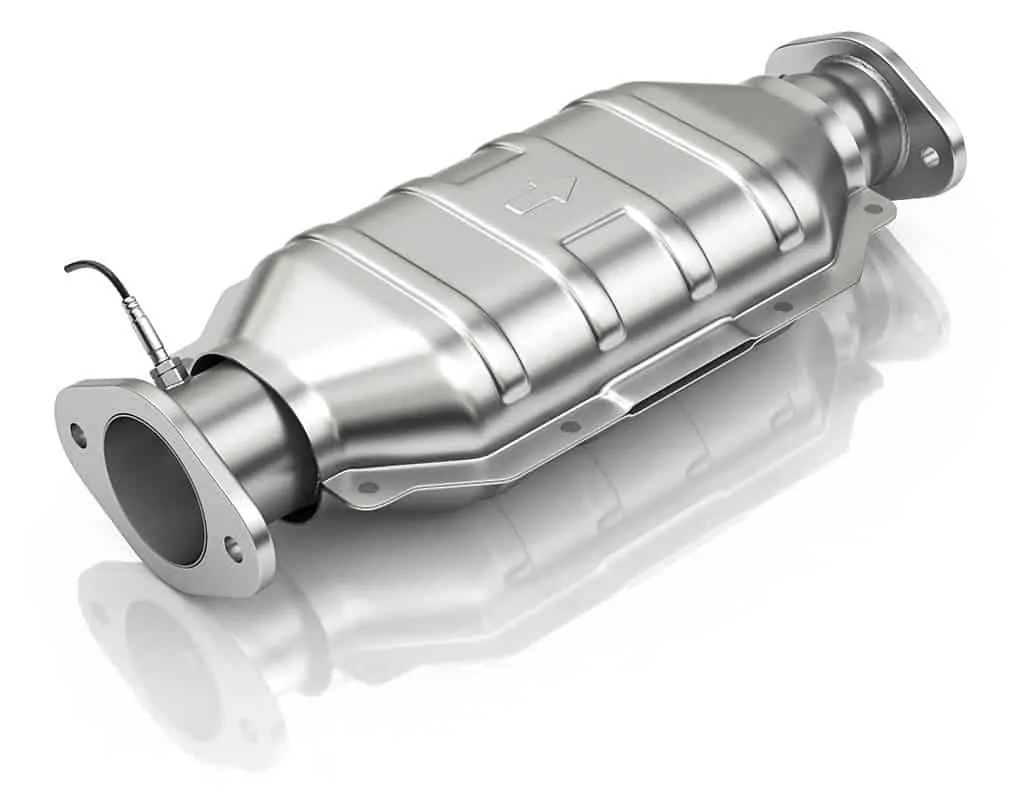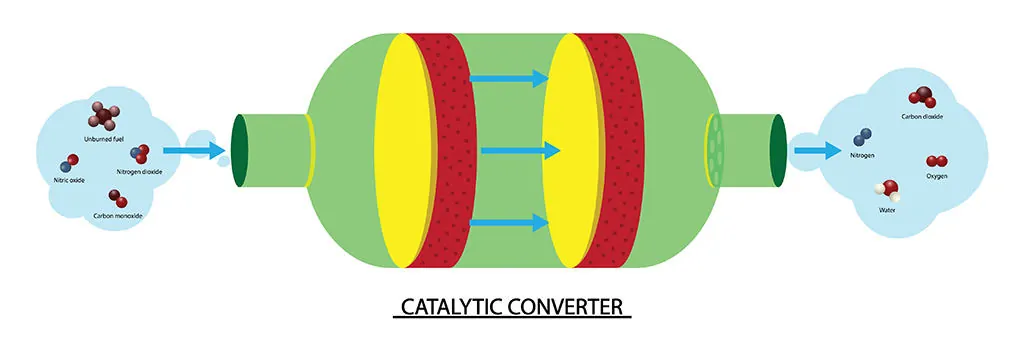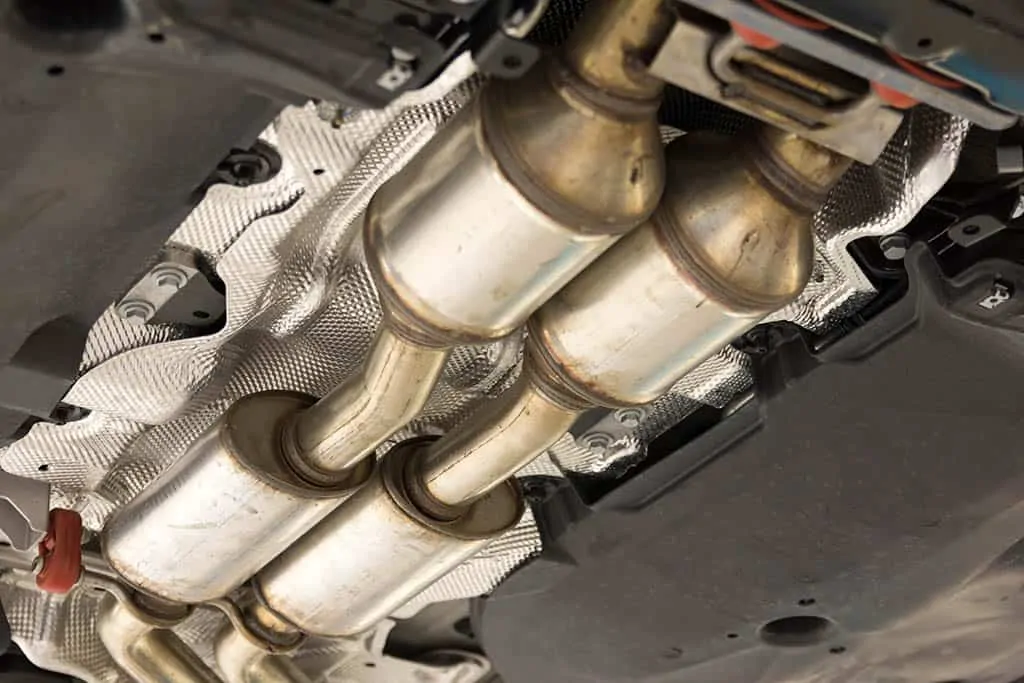All modern cars today have a special device integrated into their exhaust called a catalytic converter. Despite having no moving parts it’s considered one of the most important technological advancements for keeping the environment clean.
They also keep all of us safer since they remove harmful materials from the air we breathe. When your car comes in for its New Jersey State Inspection here at Knebles Auto in Mays Landing, your catalytic converter is one of the systems that’s being tested. If yours is operating poorly your car may not run very well and it may fail the test even if your catalytic converter is the only problem.
Today we’re going to help you get a better understanding of what a catalytic converter really is and why they’re so vital for your car’s health. We’ll talk about how they do their job and what to do when yours needs to be replaced.

What is a Catalytic Converter Anyway?
Most every car on the road today has a part of the exhaust system called the catalytic converter. Depending on the model it may be very close to the engine or further away. Some vehicles even have two catalytic converters. Inside of the catalytic converter, you’ll find precious metals like gold, palladium, and platinum among others.
Ultimately they’re a vital part of your car’s emission control system. Without a properly functioning catalytic converter, your vehicle will undoubtedly fail our local state inspection. Let’s consider what exactly this part does and how to approach replacing it if yours should fail.
What does it do?
If you’re one of the many who have wondered exactly how something that looks like a muffler can clean up your exhaust, you’re not alone. It’s actually a fascinating process that is always taking place as you drive until the part gets too worn out to function properly.
Those precious metals we discussed are the key to the functionality of your catalytic converter. As you drive your vehicle emits harmful particles and chemicals produced during combustion. For instance, carbon monoxide and unburnt nitrogen can combine to create harmful elements that lead to things like acid rain. In addition, harmful hydrocarbons try to make their way out of the exhaust as well.

Internally, a large part of the structure is a ceramic honeycomb of sorts. It’s there because ceramic objects can get very hot and stay very hot without breaking or melting. By staying hot, it promotes the chemical reactions between those harmful components we’ve talked about and the precious metals. The honeycomb structure is designed so as to maximize surface area so that it can come in direct contact with as much of the harmful particles as possible. This process is where the part gets its name. It’s acting as a catalyst to promote the change in the elements and converting them to harmless or at least far less harmless particles before they exit your exhaust.

Over time though the ceramic becomes more and more brittle and ultimately fails, usually breaking apart and ultimately clogging up the rest of the intact honeycomb structure. This causes poor performance in the engine.
Transcript:
Is your check engine light on? Again? Nah. Has someone told you that you need a new catalytic converter to fix the problem?
Hi, I’m Nancy at Kneble’s Auto Service Center.
Did you know the catalytic converter, it’s a component of your exhaust system? Its function is to convert the toxic gas to a less poisonous gas before it goes up into our atmosphere.
Now we covered what a catalytic converter does in another video. So check it out.
New Jersey State inspection requires emission testing for 1995 vehicles or newer. Feel free to check out that video, also.
Over time, catalytic converters may fail because of rust, poor fuel mixture, or contamination due to the poor running condition of the engine.
When it’s time for your catalytic converter to be replaced, your technician may say, “You have two options. OEM, which means original equipment manufacturer part or an aftermarket part.”
Your decision may be immediately swayed by the difference in cost. But understand, that an aftermarket catalytic converter may not be produced with expensive metals such as the platinum, palladium, or even gold, as that OEM converter will be.
Also know that OEM converters are designed to fit specifically for that make and that model. There may also be a difference in the warranty of an aftermarket catalytic converter, and an OEM converter.
So most importantly, make sure the converter you choose is going to meet the standards of your state. Choose wisely because there are many factors to consider.
Thank you for watching! Remember to view our videos weekly every Wednesday at 12:30. See you here next time for your appointment at 5473 Somers Point Road.
Feel free to call us (609) 625-3286, for your next appointment, or also schedule it online through our website for your convenience. See you here.
OEM Vs Aftermarket: The Showdown
So what’s the difference and why are prices all over the map for different catalytic converters that all seem to look the same. Well it comes down to three major things.
First, the amount of time a catalytic converter is going to be installed on the car.
Here in the USA manufacturers are required to sell their cars with a catalytic converter that can last for at least 8 years or 80,000 miles from the date of sale.
Aftermarket producers of catalytic converters are under no such law so they don’t have to meet the same standard.
This brings us to our second difference, precious metals. Those precious metals in the converter are what do the job so well for so long. Because of that, OEM parts have far more inside.
Often times you’ll notice that OEM catalytic converters are physically larger than aftermarket options specifically because of this.
Since aftermarket parts have less of these metals they will sometimes fail emissions inspections despite still being in physically good shape.
Finally, fitment is a major concern with many aftermarket parts. It’s one of the ways they cut their costs so low. Oftentimes you’ll find aftermarket catalytic converters that will rust quickly, they’ll have bad welds that need to be cleaned up, or they simply won’t fit properly without serious modifications.
Those modifications and adjustments require time, energy, and sometimes additional parts. After factoring in the cost of making a poorly designed aftermarket exhaust fit properly most customers will end up paying as much if not more than if they had simply purchased an OEM part.

That’s why, whenever possible we recommend an OEM catalytic converter. Their initial upfront cost is higher than that of other aftermarket options, but they suffer from none of the potential problems that aftermarket converters often do.
In addition, thanks to those high standards that they’re built to, you can be sure that they’ll last for a good long while without the need for replacement again.
If you need to make an appointment to get your catalytic converter repaired, stop by our shop, schedule online, or call us at (609) 625-3286 today!

 Enjoy the Most of Your Memorial Day Weekend 2020
Enjoy the Most of Your Memorial Day Weekend 2020